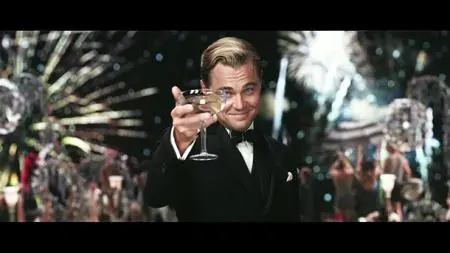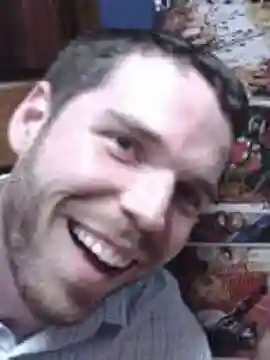Not all love is at first sight. Sometimes it takes a little bit of convincing to blossom. That can be said of the love between people, as well as the love of art.
I’ve written before about the Night Café, Patton Oswalt’s concept of how an experience with art can change you irrevocably and instantaneously. This is inspired by how Vincent van Gogh’s titular work transformed the painter's output from that point on, with Oswalt's Night Cafés including his first viewing at the New Beverly Cinema in 1995. My Night Café is the movie Alien: Resurrection, in how it cemented my engagement with movies as a cinephile.
But sometimes art has to grow on you, as is often the case with a classic. Usually a first experience with paradigmatic literature such as Shakespeare or Moby-Dick or The Adventures of Huckleberry Finn is because it’s on a syllabus. We writhe and gnash our teeth at being forced to read something, and no lecture or pop quiz will change that.
That’s because books become calcified in their untouchable canonicity and in how they're treated on the curriculum. That’s what my first experience was with The Great Gatsby, and the same was true of Maureen Corrigan.
Maureen Corrigan is a book critic for NPR’s Fresh Air, and in 2014 released So We Read On, her “personal excursion” into all things Gatsby. The exigency for this venture was the previous year’s release of Baz Luhrmann’s adaptation, starring Leonardo DiCaprio and Carey Mulligan.
The thesis of Read On is twofold: the study of Gatsby has stagnated, fixated on perfunctory symbology that give the book a heady and unapproachable quality; consequently, readers are turned off by its sacred status. Her goal is to rectify that.
The title So We Read On refers to that last enigmatic line of Gatsby: “So we beat on, boats against the current, borne ceaselessly into the past.” Taking that fixation on what has come before and our striving to recapture what is always slipping out of grasp, Corrigan attempts to revive it for modern audiences, both young and old, with the brave notion that it’s both completely different than most expect and also that it can be read like any old plain book.
Like most of us, she read the book for the first time in high school and it didn’t make much of an impression. In fact, she argues that most students, sometimes even earlier in middle school, read the book too young before they can appreciate its beaten-down sense of nostalgia. When Corrigan revisited it in college, it was the start of a lifelong love affair.
This love had to be nurtured over time, as she eventually came to teach Gatsby as an English professor and looked at it from different angles. She argues that in school you’re taught to pick the book apart like an anthropological puzzle that makes the book feel ancient. That is, aspects of metaphor such as the use of color; the focus on consumerism with the “blue and gigantic” retinas of Dr. T. J. Eckleburg's billboard looming over the valley of ashes, said eyes also representing the absence of God in the post-WWI landscape; and the parallels of Fitzgerald and wife Zelda as Gatsby and Daisy personifying the Jazz Age.
Corrigan posits that as the book became an accepted classic by the 1960s the way it was studied hit a dead end. She proposes a few different readings from the fringes of Fitzgerald scholarship or of her own devising, and shepherds the reader through her thought process in So We Read On. This includes Gatsby having the tone and attitude of the then, upon its release, unnamed noir fiction subgenre; the predominance of water imagery; the intricate structure of its 189 pages; and a subversive mischievousness exemplified in Fitzgerald's prose and the malleable voice of unreliable narrator Nick Carraway.
This readalong is not unlike Fitzgerald's grooming of his last great love Sheilah Graham Westbrook. In her autobiographical book College of One, she explains how, due to feelings of inadequacy at her limited education, Fitzgerald became a knowledge curator of sorts, pointing her in the right direction with books and how to expand one’s mind. More comparable is other recent “personal excursions” into classics such as Rebecca Mead’s My Life in Middlemarch and Michael Gorra’s Portrait of a Novel: Henry James and the Making of an American Masterpiece. Both attempt to piece together the weave-work of the authors’ favorite books through a human lens, bringing them to modern life.
The ultimate result is a kind of guided Night Café. As Corrigan explains on the final page of So We Read On (no spoilers!), there’s a passage in Dashiell Hammett’s The Maltese Falcon “that comes closest to expressing [...] what happens when a great work of art comes into your life and changes you”, and this is exactly what The Great Gatsby did to her over many years. Sam Spade recalls a man named Flitcraft who had a near-death experience when almost crushed by a construction beam. Spade comments: “He felt as though someone had lifted the lid off life and let him look at the works.” Great art should do that, whether it’s instantaneous or over time, and re-reading Gatsby, specifically the last few paragraphs, does that for Corrigan.
The Maltese Falcon is an appropriate comparison considering Corrigan’s position that The Great Gatsby has much in common with noir like Sunset Boulevard, a movie she used to compliment roadshow talks on Gatsby. The novel, she cites, has Nick utter a phrase later associated with 1930s tough guy detective fiction by the likes of Hammett and Raymond Chandler: “hard-boiled”. In reference to a great-uncle he resembles, Nick mentions the “hard-boiled painting that hangs in [his] father’s office”.

Along with Gatsby making his money as a bootlegger associated with gangsters, there's an atmosphere and grit that would manifest in the 1949 Alan Ladd-starring movie released during the height of the film noir era. Fitzgerald himself once referred to the novel as a “picture of New York life”, convincing Corrigan that “Fitzgerald is also saying that there’s something hard-boiled about it, an aspect to his poetic masterpiece that derives from the same urban American sources that inspired the gals-guts-and-guns school of fiction that evolved into the pulp magazines of the early to mid-1920s.”
Sunset Boulevard, with its protagonist doomed to a watery grave, is a fitting supplement considering “Almost every page of [Gatsby],” explains Corrigan, “references water.” With Gatsby shot to death in his pool and the predominance of the bay between Long Island's East Egg and West Egg separating Gatsby and Daisy one would think the water imagery would be an obvious point of discourse. But these surface level aspects are often overlooked in the classroom. By extrapolating the bay divide with such scenes as when Gatsby arrives at Nick’s house to meet Daisy soaked from the rain, it can be deduced that Fitzgerald interlaces the novel with ominous foreshadowing that culminates in that famous last line.
That meeting also plays into something Corrigan didn’t realize until she’d read Gatsby multiple times: Gatsby and Daisy are reunited at almost exactly the halfway mark of the book. In Scribner’s authorized 75th anniversary edition, what the back blurb claims is the “definitive, textually accurate edition” that takes into account the original manuscript as well as Fitzgerald’s later revisions and corrections, that moment of Gatsby on Nick’s doorstep clocks in on page 91, what Corrigan calls the climax of the novel in Chapter V. This rain-drenched encounter is the turning point for which the rest of the book presents a failed attempt to reclaim the past.
This is part of how the novel is “obsessively overdesigned”, as Corrigan describes it. At less than 200 pages it can barely be considered more than a novella, but every sentence feels invaluable. Ironically its brevity is what enamored it to the classroom as it guarantees a quick read and the attention of its readers. But those nicely mirrored nine chapters reflect back on each other in fascinating ways.
As for the subversive aspect of Gatsby, Fitzgerald was 28 when the book was published and it shows. First of all it’s prefaced with an excerpt from a poem by a non-existent author, Thomas Parke D’Invilliers, who as Corrigan points out, “exists only as a character in the pages of Fitzgerald’s debut novel, This Side of Paradise.” The joke is on the audience as Fitzgerald injects his book with a spark of respectability while pulling the rug out from under them.
Meanwhile, Nick is an unreliable narrator and Fitzgerald is in on the joke. Chapter III, for instance, ends with Nick declaring, “I am one of the few honest people that I have ever known.” Yet he strings along a fiancée back out west while having both a summer fling and a dispassionate romance with Jordan Baker.
Most damning of all, however, is the possible homosexual encounter with Mr. McKee in Chapter II. One might think this is bringing a modern interpretation to the text, but it’s hard to read it any other way than Nick ends up in bed with “a pale feminine man” after a night of drinking. They’re on the elevator and, right after the elevator boy makes a euphemistic crack about keeping hands off the lever, there’s an abrupt ellipsis that leads to Nick standing beside Mckee’s bed, and just as suddenly waiting for a train. Corrigan connects Nick’s treatment of women with this possible queer reading, stating: “Nick’s relationships with women are brief and evasive and he guardedly falls for Jordan Baker, whose look, name, and sporty occupation are mannish in the context of the 1920s.” If Nick can’t be honest with himself, he’s certainly not honest with us.
It’s with that in mind I picked up Gatsby for the first time in many years. My wife’s copy, it appropriately enough contained an old postcard from Dresden, Florida, where she vacationed her senior year of high school. Unlike other yardsticks such as Hamlet and Huck Finn I re-read in college, multiple times up into grad school, with new eyes and deeper instruction, my only experience with Gatsby in about 15 years had been the Luhrmann movie. With Corrigan's infectiousness and insight it's made for an invigorating read.
So I’ve had a few Night Cafés in my life. Yes there's movies, but with books it must have been The Hitchhiker’s Guide to the Galaxy or Snow Cash or Slaughterhouse-5 or The Gunslinger or The Dark Knight Returns, or even books read in school like Catch-22 or Catcher in the Rye, that had an initial, alchemical effect on my brain.
With Gatsby, however, my eyes had to be opened and my love had to be nurtured and led by the hand. An informed opinion, from an expert, distilled down to a semester’s worth (at least) of unconventional teachings made it accessible, easy and most importantly as relevant today as it was 90 years ago.
So give a classic a chance. Pick up Chaucer or Jane Austen or William Burroughs, but be willing to do a little research to understand the context. If it’s in a college class all the better, but a human being with an informed opinion is always a plus. In the end, before they were touchstones they were words put to paper by people looking for universal truth just trying to express themselves.

About the author
A professor once told Bart Bishop that all literature is about "sex, death and religion," tainting his mind forever. A Master's in English later, he teaches college writing and tells his students the same thing, constantly, much to their chagrin. He’s also edited two published novels and loves overthinking movies, books, the theater and fiction in all forms at such varied spots as CHUD, Bleeding Cool, CityBeat and Cincinnati Magazine. He lives in Cincinnati, Ohio with his wife and daughter.







